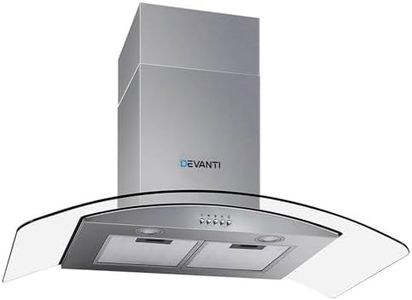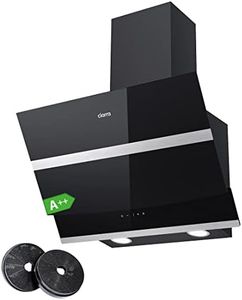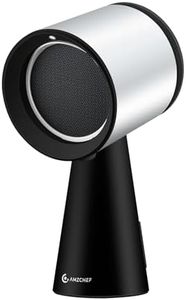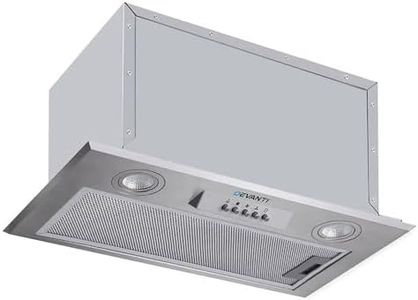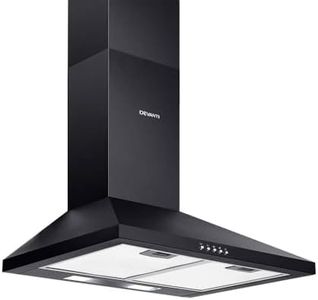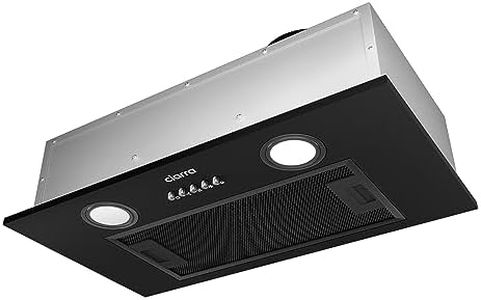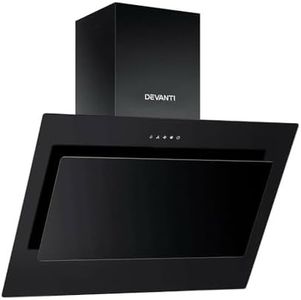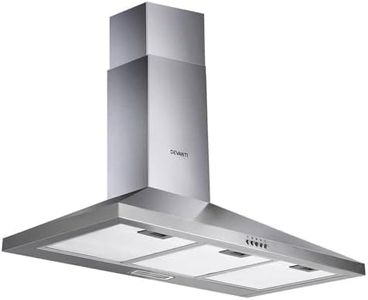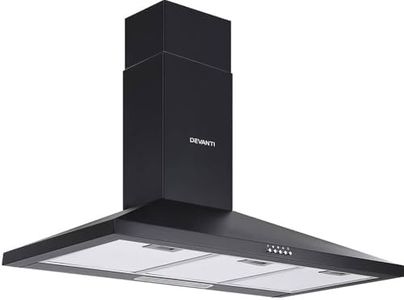We Use CookiesWe use cookies to enhance the security, performance,
functionality and for analytical and promotional activities. By continuing to browse this site you
are agreeing to our privacy policy
10 Best Quiet Range Hoods
From leading brands and best sellers available on the web.Buying Guide for the Best Quiet Range Hoods
Choosing the right quiet range hood is crucial for making your kitchen more comfortable and enjoyable to use. A range hood removes smoke, odors, and grease from the air, but some can be quite loud, which may disrupt conversations or your overall kitchen experience. By understanding key specifications, you can find a range hood that effectively keeps your kitchen air clean while operating quietly enough not to interfere with your daily life.Noise Level (measured in sones or decibels)Noise level tells you how loud the range hood will be when it’s working, usually expressed in sones or decibels (dB). This is important because a quieter range hood will make cooking more pleasant and allow you to talk or listen to music without a noisy background. Lower values mean quieter operation. Some range hoods operate below 2 sones (about the sound of a quiet refrigerator) on their lowest setting, while 4 sones or more can be noticeably louder. Consider your kitchen environment and personal tolerance to noise: if you have an open kitchen or often entertain guests, aim for a hood with lower sone or dB ratings, especially at the settings you’ll use most.
CFM (Cubic Feet per Minute)CFM measures how much air the range hood can move in one minute. This is crucial because higher CFM means more effective removal of smoke, steam, and odors, but higher airflow can sometimes mean more noise. Typically, a small kitchen or those who do light cooking, such as boiling or simmering, may only need a lower CFM (around 150-300 CFM). If you cook often with high heat, fry frequently, or have a larger kitchen, you might need a higher CFM (400 or more). Try to balance your need for air movement with the noise level, as powerful models can sometimes be louder.
Fan Speed SettingsFan speed settings let you control how hard the hood works. More speed options allow for more flexibility—you can use a quiet, low setting for simmering and crank it up when cooking something smokier. Some hoods have just two or three speeds, while others offer a range of gradual adjustments. If quiet is your priority, check that the hood is quiet enough at the setting you expect to use most. People who cook a variety of foods may appreciate more settings for better control.
Type of Range HoodThe type of range hood—under-cabinet, wall-mounted, island, or insert—affects both performance and noise. For instance, range hoods that vent to the outside are usually quieter because the motor or airflow isn’t trapped inside your kitchen, unlike recirculating models. If quietness is your goal, look for models that vent outside, and consider which type best fits your space and cooking habits.
Filter TypeFilters collect grease and can influence how quiet or efficient the range hood is. Baffle filters tend to be more durable and can handle higher airflows without increasing noise, while mesh filters may require more frequent cleaning but can sometimes dampen sound. Consider how often you want to clean your filters and if one type helps keep the hood quieter during operation.
Installation ConsiderationsHow and where the range hood is installed impacts both its noise and effectiveness. For example, longer or more complex ductwork can make a hood louder, and improper installation can increase noise levels, too. Before buying, think about your kitchen’s layout and make sure the installation style matches your environment—whether it's ducted or ductless, under-cabinet or wall-mounted—since the right choice will help you achieve a quieter operation.
